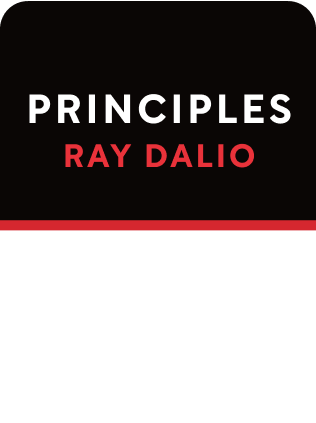

This article is an excerpt from the Shortform summary of "Principles: Life and Work" by Ray Dalio. Shortform has the world's best summaries of books you should be reading.
Like this article? Sign up for a free trial here .
What is Bridgewater’s history? When in Bridgewater history did Bridgewater fail, and how did they recover?
In Bridgewater history, Ray Dalio’s company saw both successes and failures. When the company faced a downturn in the 1970,s Dalio had to build the company back up using new tools and strategies.
Read more about Bridgewater history and how Ray Dalio build Bridgewater back up after its fall.
Bridgewater History
The late 1970s were one of the most volatile periods in markets in history. The fluctuations were caused by big shocks like breaking the link between the dollar to gold in 1971, the oil crisis after the Iranian Revolution, and the Fed’s monetary policy to try to control inflation.
The Downfall
During all of this, Dalio confidently predicted that the next depression was soon to come. He saw that debt levels were at record highs and rising faster than borrowers could repay them, particularly to emerging countries. The Fed was in a difficult position. It could print more money to avoid a cash crunch, but this would stimulate more inflation. On the other hand, if the Fed were to control inflation by becoming tight, this would trigger a massive decline in markets.
Dalio had seen elements of this before. He’d studied the past two centuries of economic history for debt and depressions. He was confident that a depression was coming, and he told his clients at Bridgewater this. To profit from his prediction, he held gold (which performs well in inflation) and bonds (which perform well in depressions).
At first, it looked like Dalio was completely right. In August 1982, Mexico defaulted on its debt, and it seemed clear that other emerging countries would follow. The Fed’s policies hadn’t been enough. Dalio’s bond bets were beginning to pay off.
Dalio looked clairvoyant for his predictions. He testified at Congressional hearings on the crisis, and he went on finance shows, claiming “I can say that with absolute certainty, because I know how markets work.” The Fed tried to ease the situation by making money more available, but Dalio predicted credit problems would only get worse, seeing analogies to the Great Depression in 1929.
He was completely wrong. The market rebounded in response to the Fed’s actions. Inflation fell, and growth accelerated. Over the next two decades, the economy enjoyed the greatest growth period in history.
Dalio lost nearly everything. He had to let go of his entire staff, leaving only himself. He had to sell their second car and borrow money from his father. After eight years building Bridgewater, he had to start from zero once again.
Building Up Bridgewater Again
After Bridgewater took a downturn, Dalio worked to rebuild the company using new strategies.
Computers and Automating Decision-Making
The development of microcomputers in the early 1980s gave Dalio even greater ability to turn his investment principles into automated rules. Working alongside a computer gave the team a few critical advantages:
- Computers could collect much more data and crunch the numbers much faster. The team fed in financial datasets for every country possible, going back by more than a century. Computers could then back-test the investment rules against this historical data, showing how the strategies would have done in the past.
- In real time, computers could produce trading decisions, more precisely and less emotionally than humans could.
But the computer didn’t work in isolation—the human and the computer worked alongside each other and improved each other. The human had imagination and logic that the computer didn’t, and he could introduce new rules. The human could also override the computer in unexpected situations, like September 11th.
To Dalio, trading alongside computers was like playing chess with a grandmaster standing behind him, helping him plot his moves.
Automating trading reinforced logic over emotion, and it gave them an advantage in volatile times. Most people react emotionally to short-term fluctuations, buying when it’s hot and selling at a loss out of panic. In contrast, wise people stick with sound, timeless principles through the ups and downs.
Growing the Team and Business
Starting from just himself, in Bridgewater Associates’ history the company grew to six employees by late 1983, ten people by the mid-1980s, and twenty by the end of the 1980s.
In Bridgewater history, the company had three lines of business:
- Selling their research and commentary on markets
- Consulting for fees, teaching businesses how to speculate in ways that would help their core business
- Managing investments directly and earning a portion of profits
Managing investments started as a small portion of their business, but it eventually grew to become the dominant arm of Bridgewater in Bridgewater Associates’ history. This development made logical sense—Bridgewater’s research and consulting were making good calls that let their clients make money, so they figured they could successfully manage investments themselves.
Their first major account was a $5 million bond account from the World Bank’s pension fund. This was a turning point. Their success on this account gave them credibility to sign Mobil Oil and other accounts, eventually becoming the top-performing US bond manager. By the late 1980s, they were managing $180 million in investments. In 1990, they landed a $100 million account from Kodak’s pension fund, a huge boost to their credibility.
Pure Alpha: A milestone in Bridgewater Associates’ History
After his crash in 1981, Dalio tried to find a way to enjoy high returns with low risk, rather than choosing just high-risk/high-reward or low-risk/low-reward. He wanted to have his cake and eat it too.
He and his team had an epiphany: proper diversification could reduce risk without harming returns. The typical idea of diversification at the time was merely to diversify within an asset class. Instead of just holding a single stock, a fund manager might buy a hundred stocks. However, the stocks were still strongly correlated to each other. Therefore the portfolio of stocks was not all that well diversified—the stocks would generally rise together and fall together.
In Bridgewater history, they found that the key was to add assets that were uncorrelated with each other. As a result of their systematic collection of investment principles across a wide range of asset classes, they could assemble a set of uncorrelated assets. Their models showed this approach would reduce the risk of a loss in any given year, without reducing overall returns. The result was a return-to-risk ratio that was multiple times better than their previous strategies, meaning they could make more money with lower risk of losing money. This was true diversification. Dalio called this the Holy Grail of investing.
Based on these principles, Bridgewater introduced a new fund called Pure Alpha. Even though the strategy wasn’t proven in practice, some clients believed in the concepts and invested. In the 26 years since the fund started, it made money in 23 years, and it’s made more money in total than any other fund ever.
The idea of diversification can be generalized, no matter what business you’re in: make a handful of uncorrelated bets to capture the upside without havingunacceptable downside. This was a huge milestone in Bridgewater history.
Now that you know about Bridgewater Associates’ history, you’ll understand why Ray Dalio decided to implement his Principles.

———End of Preview———
Like what you just read? Read the rest of the world's best summary of Ray Dalio's "Principles: Life and Work" at Shortform .
Here's what you'll find in our full Principles: Life and Work summary :
- How Ray Dalio lost it all on bad bets, then rebounded to build the world's largest hedge fund
- The 5-step process to getting anything you want out of life
- Why getting the best results means being relentlessly honest with everyone you work with






